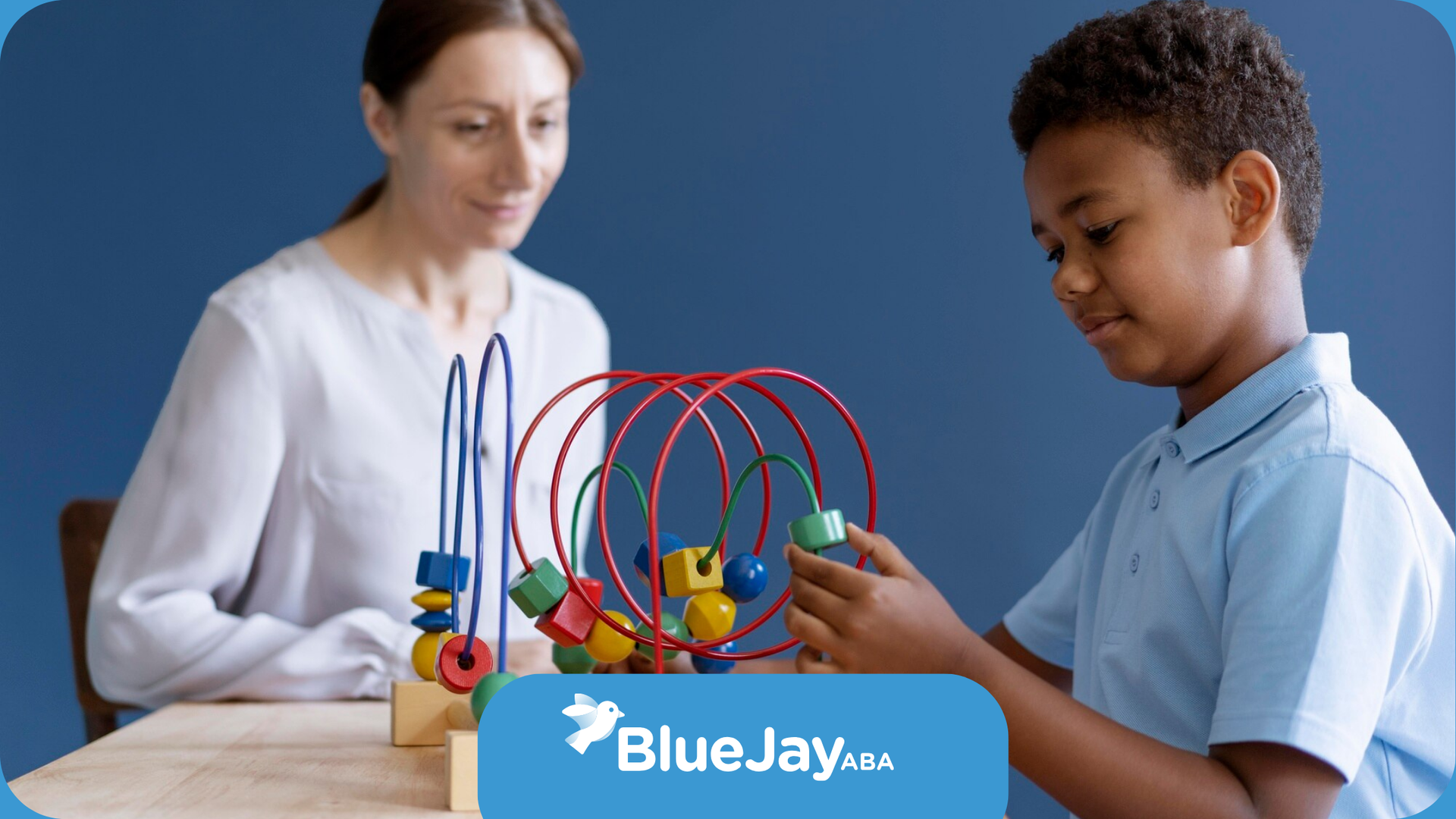Living with Severe Autism Spectrum Disorder
Understanding Autism Spectrum Disorder
Prevalence and Diagnosis
Autism Spectrum Disorder (ASD) affects a significant number of children in the United States. Current statistics indicate that one in 54 children is diagnosed with ASD, with the prevalence of diagnosed cases increasing over the years. Boys are particularly affected, as they are four times more likely to develop the condition compared to girls. The signs of autism typically emerge by the ages of 2 or 3, and sometimes even within the first 6 to 12 months of a child’s life.
Diagnosing autism is not straightforward due to the diverse range of symptoms and their varying severity. There is no specific medical test available to confirm the diagnosis. Rather, specialists such as child psychiatrists, psychologists, pediatric neurologists, or developmental pediatricians conduct thorough evaluations based on observed behaviors and developmental milestones. Early identification is crucial, as it allows for timely intervention and support.
Early Signs and Developmental Challenges
Early signs of autism spectrum disorder often manifest through noticeable delays in language and social skills. Children may exhibit challenges in responding to their names, following objects that others point to, or engaging in social interactions. Developmental stalling typically occurs between 12 to 24 months, particularly affecting language skills and responsiveness.
Some children may appear to develop normally during their first year, only to experience regression between 18 and 24 months, during which autism symptoms become evident. A table below summarizes common early signs of autism:
| Early Signs of Autism | Description |
|---|---|
| Lack of response to name | Child does not respond when called |
| Limited eye contact | Difficulty maintaining eye contact during interaction |
| Delayed speech development | Significant lag in language skills |
| Difficulty with social cues | Challenges in understanding social interactions |
| Repetitive behaviors | Engaging in repetitive actions or speech |
Parents and caregivers are encouraged to monitor developmental progress and seek developmental tests if there are concerns about delays in cognitive, language, or social skills. Early intervention has shown to significantly improve outcomes for children diagnosed with severe autism spectrum disorder. For more information on the varying levels of autism, refer to our article on autism spectrum levels.
Levels of Autism Spectrum Disorder
Autism Spectrum Disorder (ASD) is categorized into different levels based on the intensity of support needed by individuals. These levels assist in understanding the varying needs and characteristics associated with autism.
Level 1: Mild Support Needs
Individuals in Level 1 of Autism Spectrum Disorder exhibit mild support needs. They often have high-functioning autism and can live relatively independent lives. However, they may still face challenges in communication and social interactions. Characteristics include:
- Difficulty initiating and sustaining conversations
- Challenges in understanding social cues
- Occasional repetitive behaviors
Individuals at this level may benefit from targeted interventions, such as autism spectrum therapies, to enhance their social skills and communication abilities.
| Characteristics | Description |
|---|---|
| Communication | Can communicate verbally but may struggle with social engagement |
| Independence | Generally able to live independently with some support |
| Behavior | May exhibit mild repetitive behaviors |
For further details on this level, see our article on high functioning autism symptoms.
Level 2: Moderate Support Needs
Level 2 involves moderate support needs. Individuals at this level experience noticeable difficulties in communication and social interactions. They may have limited verbal skills and require more support in daily activities. Key features include:
- Frequent struggles to engage in conversations
- Limited ability to adapt to changes in routine
- Increased repetitive behaviors
Those in this category often require structured interventions and may benefit from specialized educational programs. Support from family and caregivers is crucial to assist with daily routines and social interactions.
| Characteristics | Description |
|---|---|
| Communication | Limited verbal communication; may require alternative communication strategies |
| Independence | Needs support for daily living tasks |
| Behavior | Likely to display moderate repetitive behaviors |
Level 3: Severe Support Needs
Severe autism, known as Level 3 autism, is characterized by high support needs. Individuals in this category often require 24-hour care and may be nonverbal with restricted social communication skills. They face significant challenges in:
- Sensory processing issues
- Coping with changes in routine
- Engaging in social interactions
Individuals with severe autism often exhibit behaviors such as aggression, self-injury, and intense repetitive actions, which may require vigilant supervision. These behaviors can stem from frustration, sensory overload, or physical discomfort. It is essential for caregivers to be well-prepared to manage these challenges.
| Characteristics | Description |
|---|---|
| Communication | Often nonverbal; may use sign language or communication devices |
| Independence | Requires full-time care and cannot live independently |
| Behavior | Exhibits severe repetitive behaviors and may be prone to meltdowns |
Understanding these levels is critical for families and caregivers to provide appropriate support and interventions. For more information on the different levels of autism, check out our article on autism spectrum levels.
Characteristics of Severe Autism
Severe Autism Spectrum Disorder (ASD) presents distinct characteristics that significantly impact the daily lives of individuals diagnosed with this condition. Understanding these traits can help families and caregivers provide appropriate support.
Communication Challenges
Communication is one of the most profound challenges faced by individuals with severe autism. Many struggle with verbal communication, and their ability to express themselves may be limited. This can lead to frustration for both the individual and their caregivers. Autistic individuals with high support needs often have low to very low IQs, even when assessed using non-verbal tools. However, some can learn to communicate through alternative methods such as sign language, spelling boards, or other adaptive communication tools.
| Communication Method | Description |
|---|---|
| Verbal Communication | Limited or absent; may use few words or phrases. |
| Sign Language | Some individuals learn to communicate using basic signs. |
| Spelling Boards | Tools that allow individuals to spell out words to communicate. |
| Picture Exchange Communication System (PECS) | Uses pictures to facilitate communication. |
Sensory Sensitivities
Sensory sensitivities are common in individuals with severe autism. They may exhibit heightened or diminished responses to sensory stimuli such as sound, light, touch, taste, and smell. This can lead to overwhelming experiences, resulting in anxiety or meltdowns. For example, a loud noise may cause distress, while certain textures can be intolerable. Recognizing these sensitivities allows caregivers to create a more comfortable environment and provide appropriate support.
| Sensory Sensitivity | Description |
|---|---|
| Auditory | May react negatively to loud or sudden noises. |
| Visual | Bright lights or busy environments can be overwhelming. |
| Tactile | Certain fabrics or textures may be uncomfortable. |
| Olfactory | Strong smells can trigger discomfort or aversion. |
Intellectual Disability
Intellectual disability is often associated with severe autism. Many individuals with high support needs tend to have low to very low IQs, affecting their ability to learn and process information. This cognitive challenge can complicate their ability to engage in daily activities and interact socially. Despite these challenges, some individuals may demonstrate skills in specific areas or learn through tailored educational programs and therapies.
| Intellectual Functioning | Description |
|---|---|
| Low IQ (below 70) | Commonly observed in individuals with severe autism. |
| Very Low IQ (below 50) | Some individuals may fall into this category, experiencing more significant challenges. |
| Potential for Learning | Some may develop skills in specific areas or through specialized programs. |
By recognizing these characteristics of severe autism, families and caregivers can better understand the challenges faced by individuals and adapt their approaches to meet their unique needs. For additional insights, consider exploring our section on autism spectrum levels or autism spectrum therapies.
Behaviors in Severe Autism
Individuals diagnosed with severe autism spectrum disorder often exhibit a range of behaviors that can be challenging for themselves and their caregivers. Understanding these behaviors is essential for providing the appropriate support and interventions.
Repetitive Behaviors
Repetitive behaviors are prevalent among autistic individuals, particularly those with high support needs. These behaviors can manifest in various forms, including intense and uncontrollable actions such as violently rocking, door slamming, and moaning. Such behaviors often serve as a coping mechanism to manage anxiety or sensory overload.
| Type of Repetitive Behavior | Description |
|---|---|
| Rocking | Repeatedly moving back and forth, often as a way to self-soothe. |
| Door Slamming | Opening and closing doors forcefully, which may provide sensory feedback. |
| Moaning | Producing vocal sounds that may express discomfort or serve as a form of communication. |
These behaviors are not only common but can also be quite intense, requiring careful observation and management to ensure the safety and well-being of the individual. For more information on autism levels, visit our article on autism spectrum levels.
Aggression and Self-Injury
Aggression and self-injury are significant behavioral challenges faced by individuals with severe autism. Such behaviors may arise from frustration, sensory overload, or physical pain. These individuals may engage in actions such as hitting themselves, biting, or displaying aggressive tendencies toward others.
| Behavior | Possible Triggers |
|---|---|
| Self-Injury | Frustration, inability to communicate needs, sensory overload. |
| Aggression | Sensory discomfort, environmental stressors, communication barriers. |
These behaviors may necessitate round-the-clock supervision and management to ensure the individual’s safety and that of those around them. Addressing these behaviors often requires a comprehensive approach that includes behavioral interventions and support.
Sensory Overload and Meltdowns
Sensory overload is a common issue for individuals with severe autism, particularly those with high support needs. These individuals tend to be extremely sensitive to sensory stimuli, such as crowded spaces, bright lights, or loud noises. When overwhelmed, they may experience meltdowns, which are intense emotional outbursts that can result in physical aggression, crying, or withdrawal.
| Sensory Stimuli | Response |
|---|---|
| Crowded Environments | May lead to feelings of anxiety and panic. |
| Bright Lights | Can cause discomfort and trigger meltdowns. |
| Loud Noises | Often overwhelming and may result in aggressive behavior or withdrawal. |
Understanding the triggers of sensory overload can help caregivers create a more supportive environment. Implementing strategies to minimize sensory input can reduce the likelihood of meltdowns and improve the overall quality of life for individuals with severe autism. For more insights on therapies that can assist in managing these behaviors, explore our section on autism spectrum therapies.
Treatment and Interventions
Individuals diagnosed with severe autism spectrum disorder (ASD) can benefit from various treatment methods and interventions. These approaches can enhance communication skills, daily living capabilities, and overall quality of life. The following sections outline key therapies used for those with severe autism.
Behavioral Therapies
Behavioral therapies, such as Applied Behavioral Analysis (ABA), are commonly utilized to support individuals with autism. ABA focuses on reinforcing positive behaviors while breaking down complex tasks into smaller, manageable steps. This method promotes skill development in areas such as social interaction and daily living skills, while also redirecting harmful behaviors like self-injury.
One effective form of ABA is Early Intensive Behavioral Intervention (EIBI). Research indicates that EIBI can lead to significant improvements in IQ and adaptive behaviors, with positive outcomes often observed within 12 months of intervention. This approach is particularly beneficial for enhancing language, daily communication, and self-help skills.
| Type of Behavioral Therapy | Key Focus Areas | Effectiveness |
|---|---|---|
| Applied Behavioral Analysis (ABA) | Skill development, social interaction, behavior modification | High |
| Early Intensive Behavioral Intervention (EIBI) | Intelligence, adaptive behaviors, communication | Significant improvement |
| Naturalistic Developmental Behavioral Intervention (NDBI) | Social ability, learning in natural context | Effective for young children |
Speech and Occupational Therapy
Speech therapy plays a crucial role in improving communication skills for individuals with ASD. This therapy involves working with a licensed speech-language pathologist to enhance the ability to express needs and wants. Effective speech therapy often includes collaboration with teachers, family members, and peers to foster functional communication in everyday situations. Nonverbal individuals may benefit from alternative communication methods, such as gestures, sign language, or picture communication systems.
Occupational therapy (OT) is another valuable intervention that focuses on sensory integration and motor skills. OT is tailored to each individual’s needs, addressing challenges related to fine motor movements and daily life activities. The goal of occupational therapy is to improve the quality of life and enhance participation in everyday tasks, ensuring that individuals with severe autism can lead more independent lives.
| Type of Therapy | Focus | Benefits |
|---|---|---|
| Speech Therapy | Communication skills | Enhanced expression of needs, functional communication |
| Occupational Therapy (OT) | Sensory integration, motor skills | Improved daily living skills, increased independence |
Pharmacological Interventions
In some cases, pharmacological interventions may be recommended to help manage specific symptoms associated with severe autism. Medications can address issues such as anxiety, aggression, and attention deficits. It is important for families to work closely with healthcare professionals to determine the most appropriate medication and dosage for each individual.
Medications should be considered as part of a comprehensive treatment plan that includes behavioral and therapeutic interventions. Regular monitoring and communication with healthcare providers are essential to ensure the effectiveness of pharmacological approaches and to make any necessary adjustments.
By combining behavioral therapies, speech and occupational therapy, and pharmacological interventions, individuals with severe autism spectrum disorder can receive the support they need to thrive. For more information on various levels of autism and appropriate interventions, please visit our article on autism spectrum levels.
Support for Families and Caregivers
Caring for individuals with severe autism spectrum disorder brings unique challenges for families and caregivers. It is crucial to understand the support systems available to navigate these complexities effectively.
Coping Strategies
Families and caregivers can adopt various coping strategies to manage the demands of caring for someone with severe autism. These strategies may include:
- Establishing Routines: Creating a predictable daily schedule can provide comfort and reduce anxiety for both the individual and the caregiver.
- Mindfulness and Relaxation Techniques: Engaging in mindfulness practices, such as meditation and deep breathing exercises, can help manage stress levels.
- Setting Realistic Goals: It is important for caregivers to set achievable goals for themselves and the individual they care for, which helps in reducing feelings of frustration and burnout.
Families often face challenges such as restlessness, sleep issues, and meltdowns due to overstimulation. Implementing these coping strategies can aid in alleviating some of the associated stress.
Support Groups
Support groups can provide a valuable resource for families navigating the complexities of severe autism. These groups offer a platform for sharing experiences, advice, and emotional support. Benefits of participating in support groups include:
- Shared Experiences: Members can connect with others facing similar challenges, helping to reduce feelings of isolation.
- Resource Sharing: Caregivers can exchange information on therapies, educational resources, and local services.
- Emotional Support: Support groups provide an understanding community where caregivers can express their feelings and receive encouragement.
Participating in these groups can be particularly beneficial for mothers, who often report higher levels of stress and emotional issues compared to other parents.
Emotional and Mental Health Challenges
The emotional and mental health challenges for caregivers of individuals with severe autism are significant. Parents, especially mothers, have reported:
- Increased levels of stress and mental health problems associated with caring for individuals with complex needs.
- Higher instances of fatigue, arguments, and stressful events compared to parents of children with intellectual disabilities without autism.
The crisis faced by families can stem from various factors, including health problems, emotional challenges of the child, caregiving demands, and external stressors. Understanding these challenges is crucial for developing effective coping mechanisms and seeking appropriate support.
By utilizing coping strategies, engaging with support groups, and addressing emotional health needs, families and caregivers can foster a more positive environment for themselves and their loved ones. For more information on autism spectrum levels, visit our article on autism spectrum levels.
Need Assistance?
We’re Here to Help
Our expert team is ready to support your child’s development and well-being.
We are committed to offering tailored ABA therapy solutions that promote growth.
Contact us today for Professional ABA Therapy.
Related Posts
MENU
GET IN TOUCH
STAY CONNECTED
Join our newsletter and find out more
NewsletterFooter
We will get back to you as soon as possible
Please try again later








